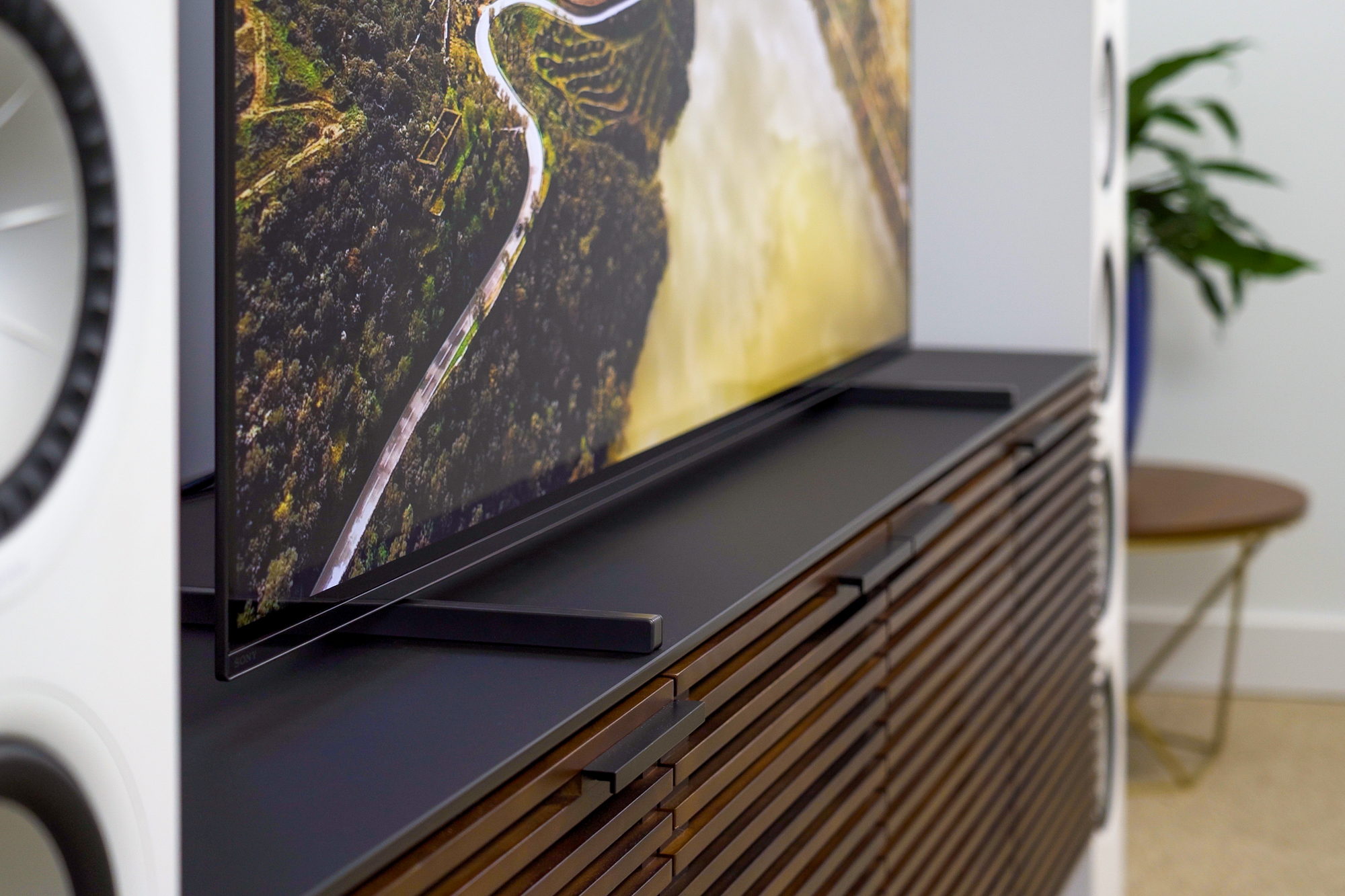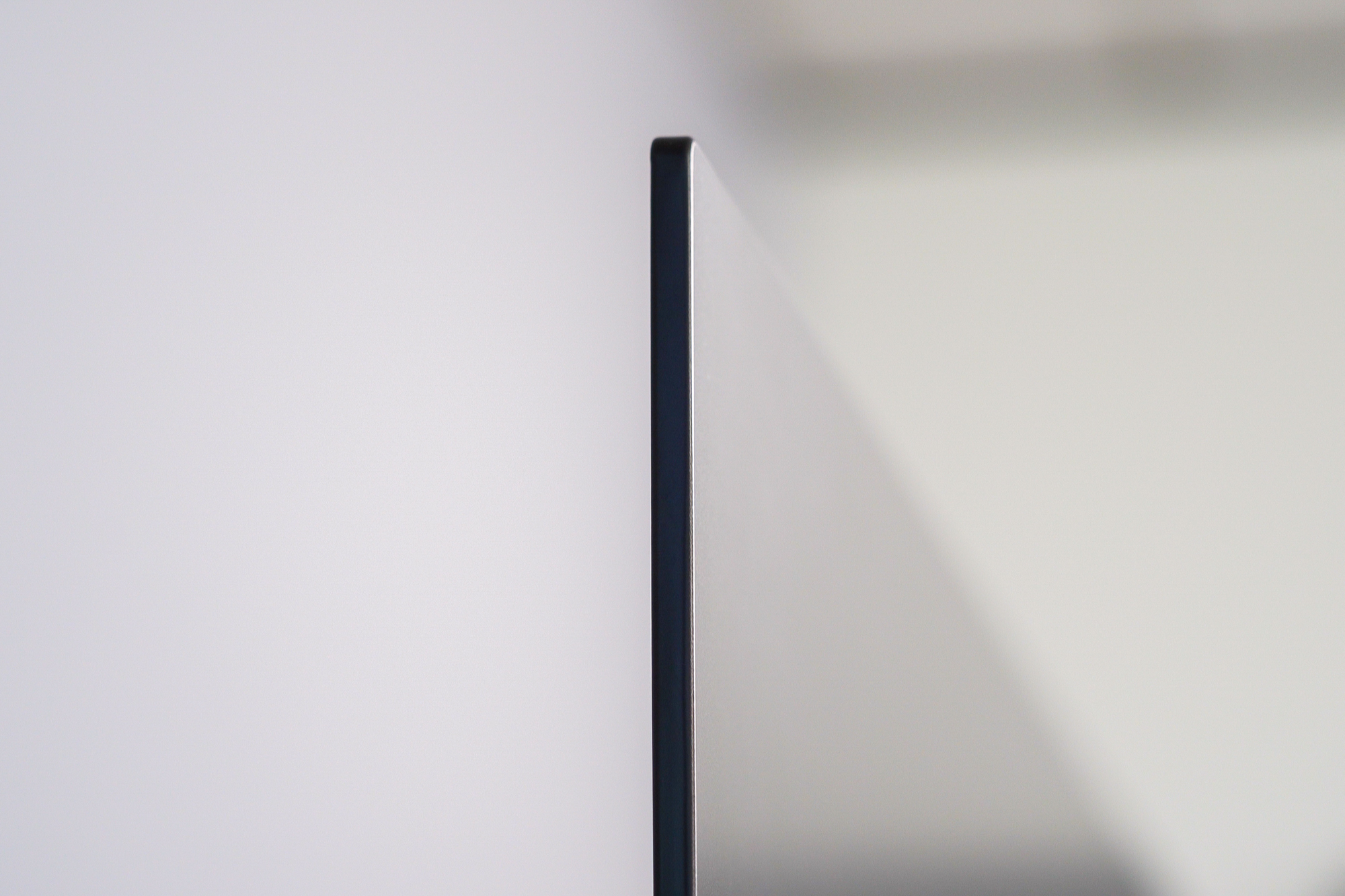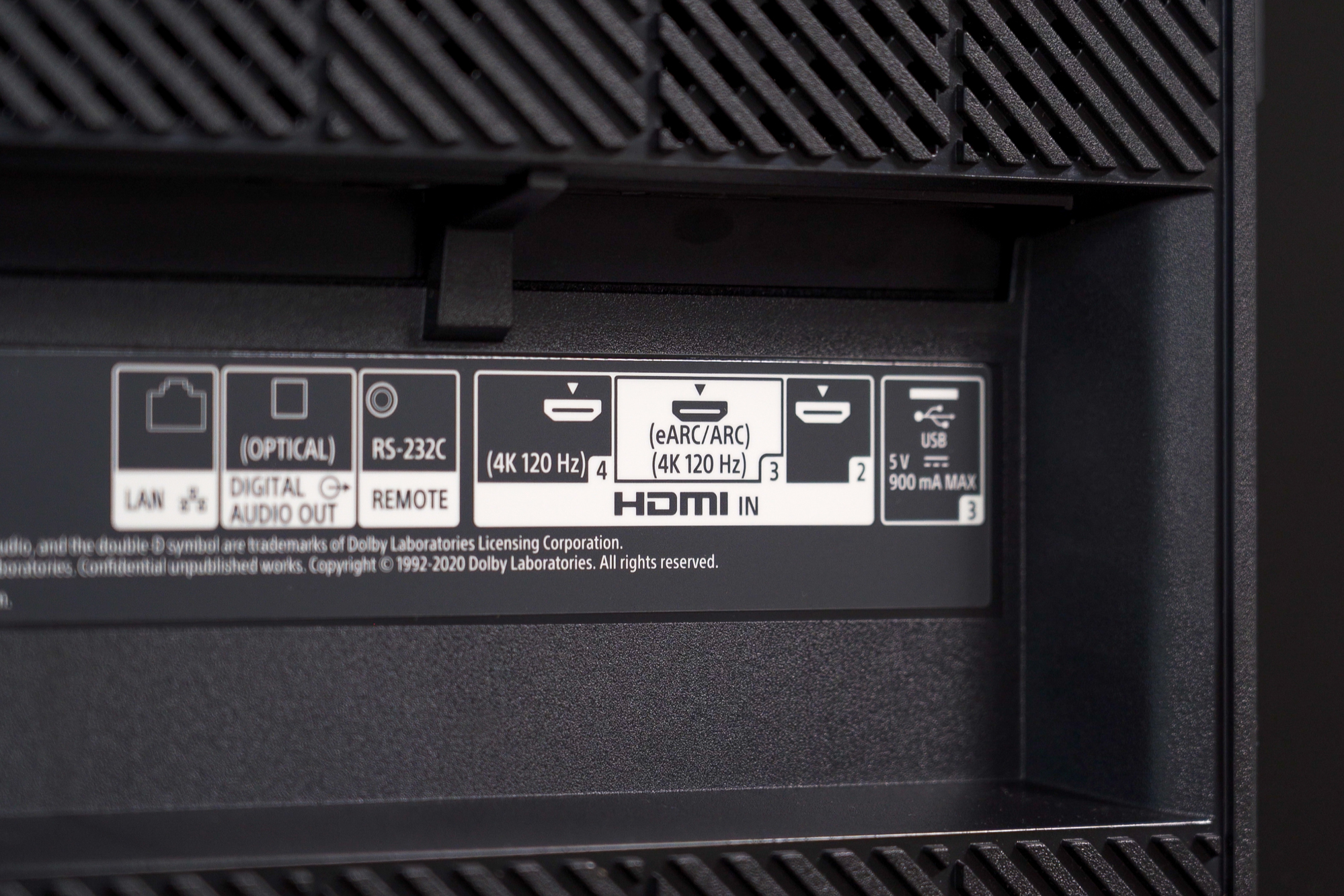
- Impeccable picture quality
- Excellent sound quality
- Google TV platform
- Excellent out-of-box settings
- Flexible stand options
- Lacks certain gaming features
I think about OLED TVs all the time; and not just because I am a TV reviewer by trade and tend to spend too much off-time thinking about my job. Frankly, it’s because, just like you, I watch a fair amount of TV at home and, because I don’t yet own an OLED TV myself (a discussion for another time), I spend a lot of that TV-watching time wishing I did own an OLED TV.
Yes, I’m an unabashed fan of OLED TVs, and I make zero apologies for that. It’s OLED’s perfect black levels and, more to the point, its superior contrast that catches most folks’ eyes, but what really seals the deal for me is the TV tech’s absence of LED backlights — backlights which, in a dark room, make themselves known all the time thanks to very annoying effects plaguing LCD TVs called “blooming” and “halo.”
With Sony, LG, and Vizio all making OLED TVs now, there’s a hearty buffet of options to choose from, but if I were buying an OLED TV this year, the Sony A80J reviewed here would be one of only two I’d consider.
Which is the other? I’ll get to that. Let me start by explaining why I think the Sony A80J OLED is one of the best TVs you can buy this year.
Out of the box
OLED TV panels are so thin and striking that a five-year-old kid could frame one in PlayDough and it would still look like a work of art. Fortunately, Sony’s approach to OLED TV design is decidedly much higher-class.
With razor-thin metallic black bezels and sturdy metal feet, the A80J OLED TV exudes a business-class aesthetic — neither overly flashy nor the least bit drab or dull. The remote included with the TV is standard Sony fare — no backlight, sorry — but it gets the job done.
There are two positions in which the metal feet can be oriented. One position slings the TV low toward its supporting media stand or credenza, the other raises the lower border of the TV up a bit to accommodate a soundbar without the screen getting blocked. It’s a smart look, but keep in mind the feet do extend toward the edge of the TV in either configuration, making for a wide stance that requires an equally wide media stand.
Setup

One of the most remarkable things about the Sony A80J is its out-of-box picture accuracy. Choose the Cinema or Custom preset picture settings options and viewers need to do little else to ensure they are getting the best picture quality possible.
Of course, accuracy isn’t necessarily what everyone is looking for. While accuracy stipulates a TV must have a relatively warm color temperature to best represent creator intent, many viewers tend to be partial to a cooler color temperature setting. For that reason, many will find the TV’s slightly brighter and more vibrant Standard picture mode to be preferable.
When it comes to picture processing, Sony’s has historically been the best.
For TV enthusiasts, however, it should be noted that the out-of-box white point and color measurements that I got by using a SpectraCal C6 colorimeter (profiled to an x-rite i1display Pro) along with Calman software were among the most accurate I have seen coming from a TV factory. In fact, many other TVs struggle to achieve the same ultra-low error numbers after a professional calibration that the A80J manages to ace out of the box, no adjustments needed.

Features
What makes a Sony OLED TV look like a Sony OLED TV is not its OLED panel — that’s actually made by LG Display — it’s the TV’s processor. And when it comes to picture processing, Sony’s has historically been the best.
The A80J carries on that legacy. Though there’s no shortage of the Sony marketing department’s influence involved, the so-called Bravia XR Cognitive Intelligence Processor driving the A80J’s picture powerfully delivers images optimized to look their best without ever perceivably dropping the ball. That is to say: If Sony’s newest, most powerful processor makes any compromises as it performs its magic, you’ll never catch it.
Aside from class-leading processing, the A80J is a very capable smart TV, running the latest version of Android TV, now called Google TV. As smart TV interfaces go, it has quickly become one of my favorites. Not only is the Google Assistant seamlessly integrated into the TV for smart home device control, but the TV itself can be controlled by other smart home devices, including the Google Home app on a mobile device.

Perhaps the best part of the
If the A80J falls short anywhere in terms of features, it would have to be its lack of full support for certain gaming features commonly associated with the latest HDMI 2.1 spec. While the A80J does sport two
Sound quality

The days of my poking fun at TVs for sounding atrocious are far from over — many of the TVs I test should sell with a warning label begging buyers to pick up a soundbar before they check out. But certain Sony TV models — and especially Sony OLED TVs — are setting a new bar for just how good a TV can sound, even if they are thinner than an iPhone.
I think most folks will be astonished by how good this TV sounds.
To make sound, the Sony A80J has two transducers stuck to the back of its OLED screen. This way, the screen itself makes most of the sound you hear. Aided by a small “subwoofer” tucked into the back of the TV, the built-in screen-speaker system produces a remarkably full, dynamic, and vividly stereophonic sound signature. While I was able to force the A80J’s sound system to distort at higher volumes, I think most folks will be astonished by how good this TV sounds. With an emphasis on dialog clarity, and voices seemingly coming from the spot on-screen at which actors’ mouths are located, not only will viewers enjoy understanding what’s being said, but they’ll be entertained by the way it seems as if the voice is coming from the actor’s location on-screen as well.
Picture Quality

Having gushed over OLED TV picture quality for almost seven years now, I sometimes find it increasingly difficult to say something fresh or unique about the latest models. Improvements to OLED picture quality have been incremental over the past few years — and that’s true of this year as well — but the incremental changes brought by the A80J OLED, while a matter of finesse, are very welcome all the same.
The A80J just seems to take everything to the next level.
With a Sony OLED, you start with a foundation of perfect blacks, paint in vivid yet tightly accurate color, then gild the lily with sparkling
And yet, it isn’t Sony’s best OLED TV. What could be better?
Not the brightest TV on the floor
Sony’s A90J OLED TV has earned itself many a headline this year for being one of the brightest OLED TVs you can buy. LG also has a brighter OLED model, the Gallery Series G1, which makes similar brightness claims.
Part of the reason brighter OLED TVs are big news is that one of the few complaints that can be made about OLED TVs is that they can’t get nearly as bright as LED and even newer mini-LED backlit LCD TVs. For those who watch TV during the day with plenty of daylight pouring in (or plenty of bright light fixtures ablaze), an OLED TV won’t have the pop or contrast an LED backlight TV will have. Brighter OLEDs are meant to challenge this notion.
Whether they do so successfully is a debate for another article. My point is that the A90J is a brighter OLED TV and therefore could be considered marginally better. But as I said before, if I were buying an OLED TV right now, it would be the Sony A80J or, perhaps, the LG C1 OLED. Neither of these are the brighter, better OLEDs, but they will make most folks (myself included) quite happy.
Not the absolute best for gaming

The one and only reason I might purchase an LG C1 OLED TV over a Sony A80J OLED TV is for next-gen gaming purposes. The LG C1 OLED offers four full-fledged
The Sony A80J OLED simply doesn’t go hard for gaming, which may seem odd since Sony makes the new PlayStation 5 console. But what most folks don’t realize is that the A80J is still an excellent TV for playing games. Sure, it may not offer variable refresh rate (VRR) and a few other features that some competing TVs do, but it’s still going to be plenty proficient for most casual gamers. Only the most hardcore gamers need to consider looking elsewhere. In other words, unless you know exactly what
My take
Sony’s A80J offers some of the best picture quality you will find in a TV and is bested only by TVs that cost many times as much. It’s also one of the most user-friendly TVs you can buy thanks to its
Is there a better alternative?
The Sony A90J and LG G1 OLED TVs are a bit brighter, but whether they amount to being better TVs really depends on the viewing environment. Most folks will find the A80J to be sufficiently bright, with excellent contrast and sparkling
How long will it last?
As with all OLED TVs, there is the slight possibility of burn-in, which can be caused by displaying the same image for extended periods of time, day after day, month after month. Those who watch the same news channel many hours per day should not buy an OLED TV. For most normal viewing, however, burn-in will not be an issue. Outside of that consideration, the Sony A80J should last well into the future, even without full
Warranty
Sony offers a one-year limited warranty on the A80J OLED TV. Further details can be found here
Should you buy it?
Yes. The Sony A80J is an outstanding TV and an excellent choice for most buyers looking for superb picture quality and sound.
Editors' Recommendations
- You can now make your own AI art with Amazon Fire TV
- Sony’s A75L is its most affordable 4K OLED TV so far
- Sony releases its 2023 TV prices with one very big exception
- This stunning, folding 4K TV now costs 50% less, but you still can’t afford it
- All Sony Bravia 2022 TV prices announced, including the QD-OLED A95K







